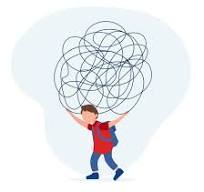The narrative surrounding Attention Deficit Hyperactivity Disorder (ADHD) is frequently deficit-oriented, stressing difficulties with focus and impulse control. But there's also a deep and frequently disregarded side to ADHD: the colorful creative tapestry that's woven across the minds of those who have this neurodivergence. It becomes clear from examining the relationship between ADHD and creativity that these people have special skills and creative abilities that, when carefully embraced, can result in gratifying and life-changing creative experiences.
The Creative Superpower of Hyperfocus
The paradoxical gift of hyperfocus, or the capacity to become completely engrossed in an activity or subject, is one of the characteristics of ADHD. This hyperfocus shows up in the creative domain as an exceptional ability to immerse oneself in artistic endeavors. The boundaries between the self and the creative process dissolve, and artists with ADHD frequently describe going into a state of flow. Using hyperfocus to your advantage can help you create incredibly complex and original art.
Originality and Divergent Thinking
Divergent thinking, a cognitive mechanism that permits the production of numerous ideas from a single starting point, is linked to ADHD. Divergent thinking is essential to creativity because it allows one to think creatively, make connections between seemingly unrelated ideas, and create innovative, original work. Artists with ADHD frequently challenge conventions and push the boundaries of artistic expression in their works, offering a distinctive perspective.
Accepting Impulsivity in the Process of Creativity
Although impulsivity is often seen as a problem in individuals with ADHD, it may also be seen as a spark for unrestrained, spontaneous creativity. Dynamic and genuine artistic expressions might arise from the capacity to respond without hesitation to unforeseen inspirations. Accepting impulsivity in the creative process enables the investigation of non-traditional concepts and the introduction of unadulterated, unprocessed feelings into artistic pursuits.
Using Creativity to Manage Stress
Several people with ADHD find that being creative is a really effective coping strategy. Art turns into a haven, a place where the mind may focus, find comfort, and regain control. The strong feelings and energies connected to ADHD can be released through creative expression, which also offers a healing environment for introspection, self-awareness, and emotional control.
Using Mindfulness to Break Through Creative Blocks
Even though ADHD is linked to intrinsic creative abilities, people may experience obstacles including self-doubt, creative blocks, or trouble focusing on a single task. Techniques related to mindfulness, such attentive awareness and meditation, can be very helpful. Artists with ADHD can more easily traverse the ups and downs of creative energy, get past challenges, and access their inner creative well by practicing mindfulness.
Building a Supportive Creative Environment
It's critical to create an environment that fosters creativity for people with ADHD. This entails identifying the particular requirements of the neurodivergent mind and putting in place frameworks that encourage imaginative inquiry. Encouraging environments, teamwork, and empathetic mentors are essential for creating a nurturing environment for artistic abilities.
Redefining the Creative Process's Success
It is critical to redefine success in light of creativity and ADHD. Rather from conforming to traditional schedules or standards, people might accept the nonlinear character of their creative process. Finding joy in the act of creation, appreciating personal development, and celebrating the process all contribute to an artistic practice that is more meaningful and long-lasting.
"Holistic Leadership: Nurturing Well-being in Organizations"
Modern leadership goes beyond the conventional concepts of power and control. With its foundation in values that put the welfare of the group and the individual first, holistic leadership has become a revolutionary method of managing organizations. This holistic viewpoint acknowledges the connections between many aspects of an organization, such as the members' physical, mental, and emotional health. Holistic leadership increases worker happiness, productivity, and overall organizational success by creating a positive and cooperative work environment.
A Basis of Openness and Confidence
Building openness and trust is the cornerstone of comprehensive leadership. A foundation of trust is established within the organization by leaders who place a high value on open communication and openness. Transparency also permeates decision-making procedures, which promotes diversity and team member empowerment. Trust is a cornerstone for healthy relationships, teamwork, and overall well-being inside the corporate ecosystem.
Autonomy and Empowerment of Employees
Empowering team members is something that holistic leaders recognize as important. Leaders cultivate a sense of ownership and responsibility by granting individuals the liberty to make decisions and make contributions towards the organization's objectives. Employee empowerment fosters an innovative culture by encouraging idea sharing and calculated risk-taking, in addition to improving job satisfaction.
Pay attention to work-life balance
Work-life integration is important, and holistic leadership understands that employees are complex people with interests and obligations outside of the office. campaigns that foster work-life balance, such wellness campaigns, remote work choices, and flexible work schedules, are actively backed by leaders. This strategy helps people feel less stressed, have better mental health, and be more satisfied with their jobs overall.
Leadership with Emotional Intelligence
Developing one's emotional intelligence is essential to comprehensive leadership. Emotionally intelligent leaders are sensitive to others' feelings as well as able to recognize and control their own. With this skill set, leaders can resolve disputes amicably, cultivate wholesome bonds with others, and foster a healthy work atmosphere. Holistic leaders support their teams' emotional health by developing emotional intelligence.
In conclusion,
There is a complex and dynamic dance between creativity and ADHD. Through the process of redefining ADHD symptoms as strengths, accepting the distinct viewpoints linked to neurodivergence, and cultivating an intentional approach to creativity, people with ADHD can fully realize their creative potential. The creative canvas expands to an infinite area where the vivid colors of ADHD add to a mosaic of creativity, uniqueness, and unbounded artistic expression.


No comments yet